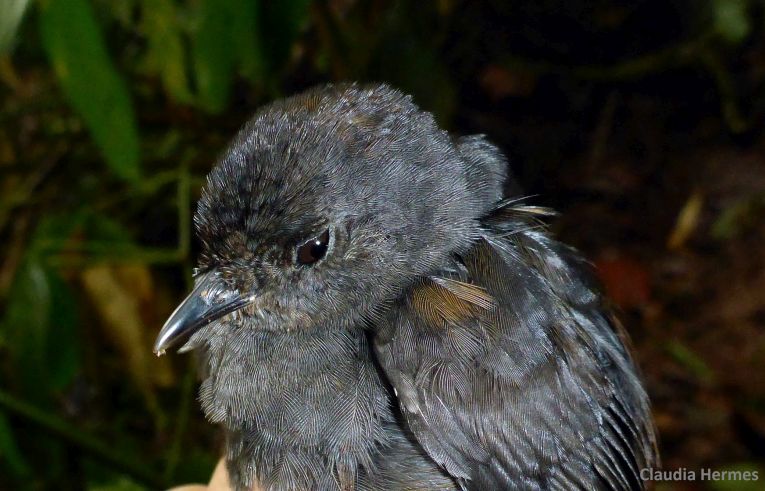Claudia Hermes with Annika DÃ ¶pper, H. Martin Schaefer and Gernot Segelbacher, all of the University of Freiburg in Germany, have been studying the effects of fragmentation of South American forests, as the many different types of rainforest are more and more decimated. Nature Conservation’s paper appears this week as Effects of forest fragmentation on the morphological and genetic structure of a dispersal-limited, endangered bird species.
Forest corridors are the fashionable way to go with separate pieces of vegetation over a large area, but the cloud forests in Ecuador are unique and perhaps difficult to regenerate in ways to suit their endemic plants and animals. The use of dispersal corridors by the endangered Ecuadorian Tapaculo were identified and an interesting adaptation of the species to the degree of of cloud forest fragmentation. This would be useful to any such species if extinction were to threaten.
Genetic drift, or the appearance of less-than-useful characteristics in a restricted population, appears in small fragmented communities, so this connectivity is a lifesaver. Migration rates and gene flow seem to maintain a high level of genetic diversity.
With very little known about the many similar Tapaculo species, either genetically or ecologically. This bird has been called El Oro Tapaculo, or scientifically, Scytalopus robbinsi since it was found in 1990, Their insectivorous habits seem to require high quality habitat in the deep, dark undergrowth of mature forest. They rarely cross open glades and are almost unable to fly long distances, hopping or walking instead, among the shrubs. They are endemic to a 1100km2 range in SW Ecuador, but have been declining, possibly to as little as a few thousand individuals.
In the secondary forests of the private Buenaventura reserve and nearby, the tree areas ranged from 15 to 900 hectares. Using mist nets and decoy tape recordings, 28 males were captured and ringed within a 10-minute time limit. This hopefully ensured their rapid return and successful recovery from capture.
Testing for any past decline in population, no decline in diversity was detectable over the last 25 years, but there had been a severe population decline from a maximum of 26,000, probably around 7,000 years ago. With such a poor flier, there were changes in the wing shape as the forest size varied. This seems to be an adaptation to flying, with rounder wings found in larger forests and narrower wings found in small patches of forest. The birds in small forests could therefore fly better and had enhanced mobility. Maneuverability in the larger denser forests was helped by round wings.
Gene flow is not impeded by many barriers in this part of Ecuador, but distance is a factor. One brave individual covered the furthest distance seen in a dispersal event. He established a new territory by moving 245 m across un-forested habitat. It is feasible that gene flow will be restricted in the future, as sub-populations develop into genetically distinct groups with different morphology. The great hope is that the considerable reforestation effort being made can influence selection pressures. With more habitat availability, the sepcies will not require enhanced mobility, so reducing any divergence in wrong morphology and increasing the gene flow to normal levels.
This is real evolution in action, in this particular bird. It remains to be seen whether the natural experiment
will continue to progress as expected. The trees have the answer, while their cultivation and conservation is critical to any positive outcome.










